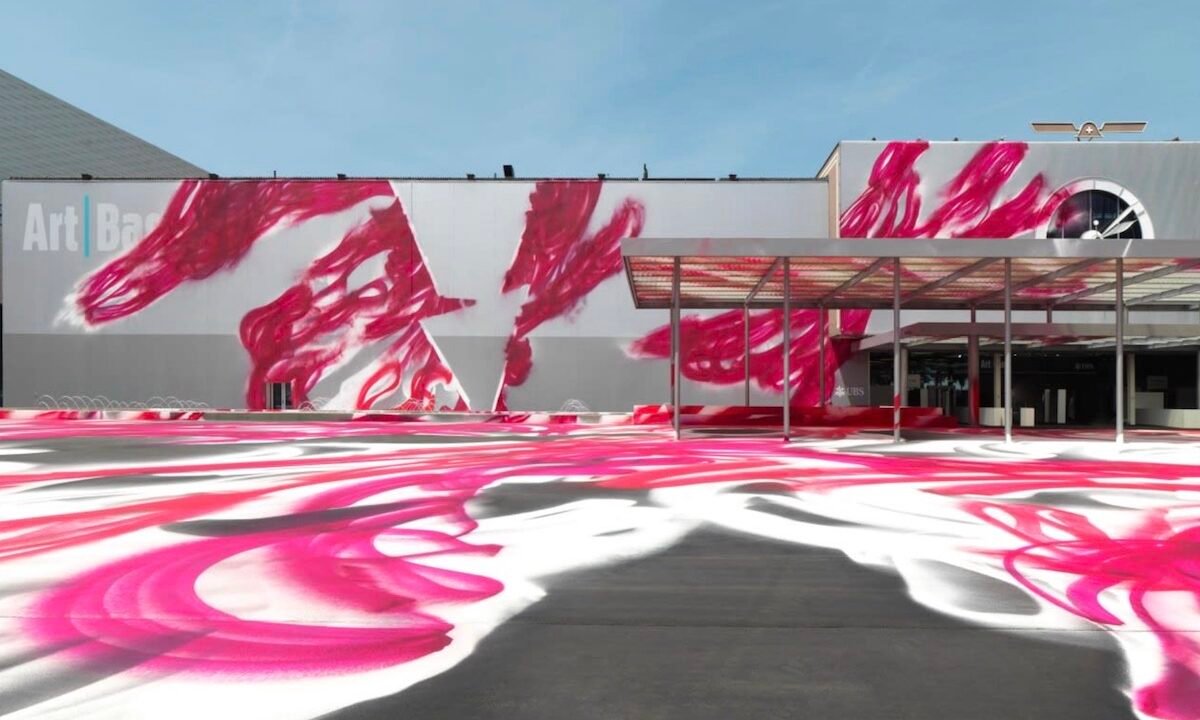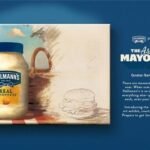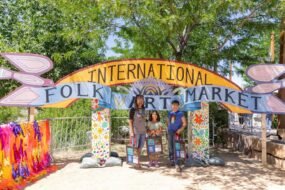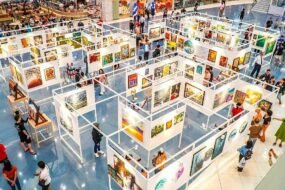
Marking its 55th edition, Art Basel returned to Messe Basel this June with an ambitious presentation that confirmed its position as the undisputed heavyweight of the international art fair circuit. Spanning from June 17 to 22, with two preview days, the fair drew an impressive 88,000 visitors, bringing together collectors, curators, artists, and institutions from around the world. This year, 289 galleries from 42 countries and territories participated, reinforcing the fair’s global scope and relevance. While the numbers were notable, it was the atmosphere inside the halls—and the energy spilling out into the city—that gave a true sense of the fair’s continuing vitality and influence.
The 2025 edition was guided by Maike Cruse, in her role as Director of Art Basel in Basel, who described this year’s fair as a testament to the global market’s strength, resilience, and international reach. Indeed, visitors came from across Europe, the Americas, Asia, the Middle East, and Africa, with collectors flying in from as far afield as Bangladesh, Nigeria, Tunisia, and Chile. UBS, the fair’s global lead partner, returned with an extensive presence, curating a special exhibition of geometric abstraction from its corporate collection, alongside installations and programming that extended beyond the exhibition halls into the fabric of the city.

Institutional representation was exceptional. Over 250 major museums and foundations sent representatives, including the Guggenheim (both in New York and Abu Dhabi), MoMA, Centre Pompidou, M+, Zeitz MOCAA, the Leopold Museum, and the Louisiana Museum of Modern Art. Their presence underscored Basel’s continuing role as more than a commercial event—it remains a critical meeting point for cultural exchange and curatorial investment. This robust attendance also resulted in significant institutional acquisitions, particularly works by female artists and first-time participants, a sign of the market’s gradual shift toward inclusion and discovery.
Dealers across all sectors of the fair reported brisk sales. Major pieces by David Hockney, Gerhard Richter, Keith Haring, and Ruth Asawa found buyers. Mark Bradford’s dynamic compositions held strong, while works by Cecilia Vicuña, Loie Hollowell, and Alina Szapocznikow drew attention and institutional interest. Conversations on the ground suggested an increasingly informed and adventurous collector base. Sales were not limited to the blue-chip tier; many younger galleries reported strong engagement from both new and established collectors.

Katharina Grosse’s monumental public commission, CHOIR, transformed the Messeplatz with sweeping arcs of vivid magenta paint applied directly to architecture and pavement, drawing visitors into a spatial and chromatic reimagination of the urban square. Curated by Natalia Grabowska, the work—Grosse’s largest to date in an urban setting—became one of the most photographed and discussed elements of the fair. It also acted as a gateway into Art Basel’s wider public program, which included the Parcours sector, curated for the second time by Stefanie Hessler. Located along Clarastrasse, this year’s Parcours explored themes of artifice and ecology with new commissions that integrated seamlessly into Basel’s urban fabric. From an 80-metre textile work by Hylozoic/Desires in Münsterplatz to Selma Selman’s scent-infused installation in St. Clara Church, each piece engaged viewers in unexpected, often multisensory ways.
What The Dealers Had To Say:
Unlimited, Art Basel’s sector dedicated to large-scale and performative works, returned with a compelling selection curated by Giovanni Carmine. Highlights included Andrea Büttner’s towering Shame Punishments series, Atelier Van Lieshout’s dystopian sculptural narrative The Voyage – A March to Utopia, Marinella Senatore’s participatory installation We Rise by Lifting Others, and a revival of Felix Gonzalez-Torres’ classic Untitled (Go-Go Dancing Platform). The hall’s extended opening for Unlimited Night gave visitors extra time to engage with works that require more than a cursory glance.
New to this year’s edition was the Art Basel Awards, held on June 19 at the historic Rathaus Basel and the Kunstmuseum. Thirty-six Medalists were honoured for their contributions to contemporary culture. The launch of the Koyo Kouoh Fellowship, in collaboration with RAW Material Company, was announced during the ceremony. The three-year initiative will support one African art professional annually, offering a fully funded development program at Art Basel in Basel. The following day, the inaugural Art Basel Awards Summit took place, offering free panel discussions and keynotes to the public. The summit attracted artists, curators, patrons and thinkers, creating space for urgent conversations about the future of art and culture.
On the commercial side, the Art Basel Shop leaned into playful and collectable collaborations this year. Katharina Grosse extended her visual language to a series of exclusive items, including hand-painted footballs, transparent vinyl bags, and signature rolls of tape. Other artist-designed editions included a raincoat by Thomas Bayrle, a collector’s jersey and scarf celebrating FC Basel, and limited-edition objects by Sasha Stiles, Daniel Arsham, and Amoako Boafo. Two reimagined Art Basel logos adorned a new line of totes, t-shirts and accessories. In-store artist signings and events kept the energy high throughout the week.
Sales Highlights:
Sales across Art Basel 2025 reflected strong demand in both the blue-chip and emerging markets, with significant acquisitions reported from major galleries representing artists at various stages of their careers. Highlights from the fair’s commercial performance span continents, price points, and collecting interests, with activity notably brisk across all major sectors.
Annely Juda Fine Art (London) reported the sale of David Hockney’s Mid November Tunnel (2006), an oil on two canvases, to a private collection in the USD 13–17 million range. Xavier Hufkens (Brussels) secured strong results with Tracey Emin’s Hunter (2025) selling for GBP 1 million, alongside Alice Neel’s Pink Table (1956) and Sterling Ruby’s SP279 (2014), fetching USD 1 million and USD 600,000 respectively. Further sales from Hufkens included a bronze assemblage by Danh Vō at EUR 350,000, as well as paintings by Charline von Heyl, Qiu Xiaofei, and Lesley Vance, each in the USD 220,000–350,000 range. Cecilia Vicuña’s Dar ver Cacaxtla (2023) sold for USD 185,000, while sculptural works by Mark Manders and Thomas Houseago—sold in multiples—ranged from EUR 110,000 to USD 110,000. A painting by Ulala Imai changed hands for USD 100,000, and two works by Tatiana Trouvé each achieved EUR 85,000.
David Zwirner (New York, Paris, Hong Kong, London, Los Angeles) delivered a particularly strong showing, with a Ruth Asawa sculpture achieving USD 9.5 million and a Gerhard Richter painting closing at USD 6.8 million. A diptych by On Kawara sold for USD 1.3 million. Meanwhile, Gladstone Gallery (New York, Brussels, Seoul) placed a sumi ink on wood work by Keith Haring for USD 3.5 million, and also sold pieces by Alex Katz and Robert Rauschenberg, each at USD 1.2 million.
Hauser & Wirth saw Mark Bradford’s market remain buoyant, with two major works from 2025 each selling for USD 3.5 million. Frank Bowling’s Iceni (1975) fetched USD 1.85 million. At Karma Gallery (New York, Los Angeles), Matthew Wong’s 2017 canvas The Smoke reached USD 1.2 million.
Thaddaeus Ropac (Salzburg, Paris, Pantin, Seoul, London) placed several major works by Georg Baselitz, including Drei Hunde aufwärts (1968) for EUR 3 million, Bündel (2015) for EUR 2 million, and Hier jetzt hell, dort dunkel dunkel (2012) for EUR 1.8 million. Additional sales included James Rosenquist’s Playmate (1966) at USD 1.8 million and Robert Rauschenberg’s Lipstick (Spread) (1981) at USD 1.5 million. Another Baselitz painting, Einer schwimmt noch (2023), went for EUR 1.2 million.
White Cube achieved a notable result with Michael Armitage’s In the garden (2015), which sold for USD 3.25 million. Baselitz’s Oh ho, siamo ritornati… (2023) brought EUR 2.2 million, and Cai Guo-Qiang’s Red Birds (2022) sold for USD 1.2 million to a European institution.
Yares Art reported the sale of Larry Poons’ The Outerlands (2022) in the Unlimited sector for USD 1.2 million. Lisson Gallery placed a 1948 Carmen Herrera work for USD 800,000, while Konrad Fischer Galerie sold Carl Andre’s CEDAR ROTOR (2002) for USD 800,000 to a Japanese collector. The gallery also moved On Kawara’s postcard works from the “I GOT UP” series to collectors in the US and Brazil for between USD 36,000 and 60,000.
Jessica Silverman Gallery (San Francisco) confirmed the sale of Judy Chicago’s Pasadena Lifesavers (1970) to a West Coast museum for USD 400,000. At Bortolami (New York), a painting by Lesley Vance sold for USD 150,000, while Seung Ah Paik’s and Marina Rheingantz’s mixed-media works were placed with private US collectors at USD 45,000–50,000.
GRIMM Gallery (Amsterdam, London, New York) sold Claudia Martínez Garay’s mural installation Conversiones (2025) for EUR 90,000 to the Pérez Art Museum Miami. Arturo Kameya’s God was on our side, the ref wasn’t (2025) was placed with a Dutch foundation for EUR 40,000, and three additional works from Kameya’s “Statements” presentation went to institutions in China and the Netherlands at prices ranging from EUR 15,000 to 20,000.
Altogether, the fair offered further evidence of the market’s broad base and global interest, with both historical and contemporary works moving decisively across a wide value spectrum.
What The Dealers Had To Say
Outside the fairgrounds, Basel itself offered a museum-quality spread of exhibitions and programming. The Fondation Beyeler presented Vija Celmins and Jordan Wolfson, while Kunstmuseum Basel mounted major shows on Medardo Rosso and a themed group show titled Verso. Kunsthalle Basel featured solo presentations by Dala Nasser, Ser Serpas, and Marie Matusz. At Schaulager, Steve McQueen unveiled a powerful, site-specific installation. The Vitra Design Museum contributed to the citywide cultural immersion, while Liste Art Fair Basel celebrated its 30th anniversary with a typically energetic display of emerging voices. Basel Social Club, in its fourth edition, took over a decommissioned bank building and turned it into a sprawling multi-room, multi-disciplinary wonderland.
As the final day came to a close, Art Basel once again proved its dual function: a barometer for the global art market and a catalyst for contemporary cultural dialogue. The mood on the ground was confident but not complacent, with a widespread sense that the art world, like the fair itself, continues to evolve—expanding its reach, refining its vision, and redefining what an art fair can be. The next edition is scheduled for June 18–21, 2026, with preview days on June 16 and 17.
This Article Will Be Updated with a complete list of dealers’ comments. Please return…








